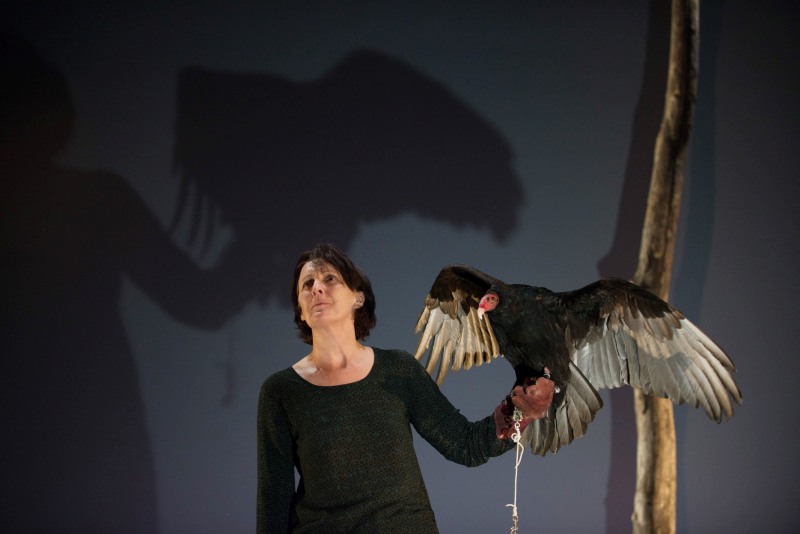 Colm Tóibín’s novella, on which this show is based, was published just a few months before this production debuted on Broadway. The show drew protests, angered thousands and closed early. Indeed it’s hard to imagine a performance depicting Mary the Mother of God as a cynic of Jesus’s power ever flourishing in the commercial land of razzmatazz.
Colm Tóibín’s novella, on which this show is based, was published just a few months before this production debuted on Broadway. The show drew protests, angered thousands and closed early. Indeed it’s hard to imagine a performance depicting Mary the Mother of God as a cynic of Jesus’s power ever flourishing in the commercial land of razzmatazz.
The Testament of Mary is anything but showy. What could easily be an ego trip or a star vehicle for an actor is anything but. At the top of the show, audiences are invited onto the stage to wander through Tom Pye’s installation-like set. A live vulture wanders the stage; a symbol of menace and death’s triumph. Shaw sits encased in a glass box: the silent icon, the most respected female figure in Christianity. Pye’s simple, sparse design hints at a domestic world lost in the middle of nowhere, yet everywhere all at once. A copper tap holds water, tables and chairs scattered across the stage reflect the domesticity within epic events, an uprooted tree hangs in the air, its life having been ripped from the earth.
What we are presented with is Mary testifying to unseen interrogators, recounting her version of the last days of Christ. She questions the idea of her son’s power; describing drolly how peaky Lazarus looked after his supposed resurrection, and raising an eyebrow about turning water into wine. In Fiona Shaw’s hands, the solo performance is itself a testament to honest storytelling that resonates through restrained passion. Dressed in a simple black dress, often draped in scarves and cloaks, she is utterly herself yet embodies Mary as a mother, a wife, a woman.
Most painfully, she recounts in detail her son’s crucifixion. Tóibín cleverly asks us to re-imagine a story that saturates the popular imagination from a new angle. Imagine what it must feel like to witness your son be savagely hammered to a cross as much for people’s amusement as a warning. It humanizes the icon of Mary, and indeed ‘The Son of God’, and delicately calls into question how faith is developed, warped and invested in.
The piece is an enraging and thoughtful provocation; at once a furious account of how a mother lost her son to himself and the world, and a study of how mankind creates story, icons and belief.
